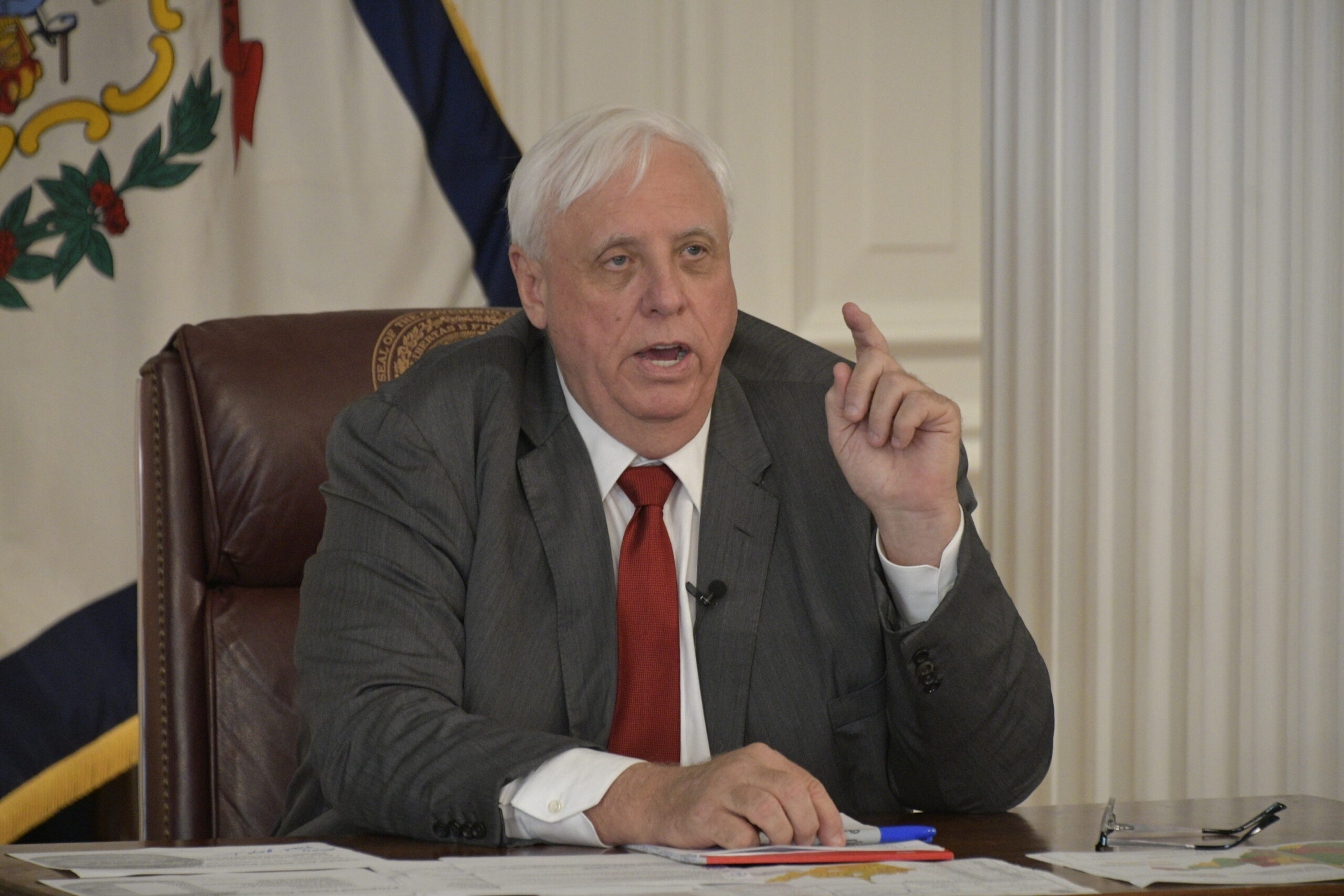MORGANTOWN — Gov. Jim Justice opened his Friday press briefing with a bit more discussion of the ouster of Bureau of Public Health Commissioner Cathy Slemp, but spent the majority his time reviewing the state budget and the allocation of the state’s $1.25 billion of CARES Act money.
On Slemp, Justice said, “Numerous things have led me all along the way to believe my confidence level just evaporated. … Dr. Semp’s a good person and I know she’s done some good work and we’re very roud of her in this pandemic.”
It’s a big task, he said, with lots of moving parts. “You expect results. You don’t expect just kindness and effort.”
He again cited the example of the overstating of positive cases at Huttonsville Correctional Center and the failure to update the numbers as inmates recovered, but added there were “many, many different incidences.”
He also took a poke at his critics, noting it’s campaign season and some have said he’s deliberately deflating the case numbers to look better. But it’s just the opposite, he said, the case numbers have been inflated. “We have every reason to believe we stumbled and bumbled all over ourselves.”
Asked about filling Slemp’s spot, he said they want to do it as soon as possible and have already interviewed one person. Meanwhile, they have plenty of people on hand to handle the current situation.
Justice briefly mentioned the Myrtle Beach outbreaks, and said there are now more than 100 cases in 18 counties.
Moving on to money, Justice briefly reviewed the budget situation before the pandemic. Fiscal Year 2019 ended with a record surplus of $511 million, he said. But FY 2020, which began July 1, 2019, didn’t open so well, with a $66 million shortfall heading into September.
Revenues improved during the next few months, he said and by March the budget was only $6 million shy of breaking even, But the COVID-19 hit and April saw a $192 million shortfall, caused by buisness closures and the change of the tax filing date to July 15.
They tapped into reserves, he said, and the increased federal Medicaid match. Revenues inched northward as The Comeback phased in, with essential businesses never shutting down. “I knew all along that the engine was still ruining,” he said.
So June 30, the end of FY 2020, will see a small$10 million surplus, he said.
Turning to CARES money, he presented a chart of his planned allocation. City and county governments wil receive $200 million. He’s set aside $150 million to allow small businesses employing five to 35 people to apply for grants up to$10,000 apiece.
Fairmont Regional Medical Center received $10 million to prepare it to handle a major outbreak. The Division of Highways gets $100 million for COVID-19-related roadwork, to allow access to hospitals and medical care. Justice said that freed up $100 million in the road fund for other projects. “We vetted it in every way possible through all of our attorneys.”
With some residents having trouble paying water bills, the plan sets aside $25 million for public service districts to keep them afloat.
The governor’s contingency fund gets $16 million as a reimbursement for expenses such as PPE, and the state gets a $57 million reimbursement.
Justice called the final two allocations “monstrously important.” WorkForce West Virginia gets $287 million to replenish to drained unemployment fund and $400 million for claims from now through Dec. 30.
Justice said not allocating that money to WorkForce would mean bonds would be de-rated and business unemployment taxes would have to be raised.
He thinks the money devoted to WorkForce may be forgiven and allowed to be diverted to other measures.
The total adds up to $1.245 billion, leaving $5 million unallocated, Justice said.
On top of the CARES money, he said, the state had $970.8 million in additional federal grants on hand. Top priorities for that money include higher education and K-12 (ballpark $80 million for each), future pandemic preparedness such as PPE manufacturing, rural hospitals, health departments and broadband.
Justice expressed optimism about four other postive “surprises” he sees coming.
One isn’t a surprise, as such. The state will see a revenue uptick when the income tax dollars due July 15 low in, jump-starting the fiscal year, he said.
The other three: a fourth federal stimulus package that may help the state and its residents, though the package hasn’t taken shape yet; CARES money to replace the $687 million going to WorkForce; and he’s still hoping for federal money to replace COVID-related state budget losses.
COVID-19 Czar took a few minutes to offer some encouragement. Across the nation, he said, the highest total number of positive tests since COVID-19 came to America was recorded Thursday, but West Virginia is still doing well.
Data here – the daily positive rate, hosptial and ICU admissions and active cases – offers comfort but we still need to wear masks, keep physically distant and follow the other precuation,.
“If we continue to do this we will continue to do great and protect the vulnerable citizens of West Virginia and our health care assets,” and continue to open businesses and advance the rebound.
Tweet David Beard @dbeardtdp Email dbeard@dominionpost.com




